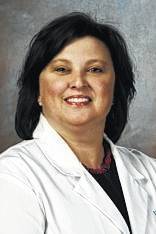CHERAW, S.C. — “The aorta is the major blood vessel that supplies blood to the body. It is about the thickness of a garden hose, and runs from the heart, through the center of the chest and abdomen. When there is an enlarged area in the lower part of the aorta it is called an abdominal aortic aneurysm,” said Dr. Rzucidlo, vascular surgeon with the McLeod Heart and Vascular Institute.
Abdominal aortic aneurysms are characterized as a disease that predominately affects men. However, although they occur more frequently in men, women have abdominal aortic aneurysms that expand 40 to 80 percent faster and rupture at smaller diameters than compared with men’s.
Because the aorta is the body’s main supplier of blood, if an abdominal aortic aneurysm were to rupture it can cause life-threatening bleeding. Women are also more likely to wait to seek medical care when their aneurysm is at an emergent or ruptured state.
Abdominal aortic aneurysms often grow slowly and without symptoms, making them difficult to detect. There are no predictions to aneurysms — not all will rupture.
“Some start small and stay small. Others expand over a period of time, while some expand quickly,” warns Rzucidlo.
“For those abdominal aortic aneurysms that do enlarge, patients may notice: a pulsating feeling near the navel, deep and constant pain in or on the side of the abdomen or back pain,” she said. “Anyone experiencing these symptoms should seek emergency care right away.”
There are several risk factors that increase the risk of abdominal aortic aneurysms. These factors include: your age, which most occurrences being found in individuals 65 and older; smoking; family history; having atherosclerosis, which is the build-up of fat in the lining of blood vessels; and having high blood pressure, which speeds up damage to blood vessel walls.
An abdominal ultrasound is a preventative screening tool that can be used to identify an abdominal aortic aneurysm so that prompt treatment can be provided prior to the rupture.
“Abdominal ultrasound screenings are recommended for all women who are age 65 or older with a family history or those who have smoked and all men age 65 years old or older and men as early as 55 with a family history,” said Rzucidlo.
The LUCY Study
From August of 2015 to February of 2017, Rzucidlo was one of five female vascular surgeons from across the United States serving on the Advisory Board for the LUCY Study — the first prospective clinical trial to evaluate endovascular repair (EVAR) in women. McLeod Regional Medical Center also participated in this trial.
EVAR was developed to reduce mortality associated with an open surgical repair of an abdominal aortic aneurysm. A minimally invasive procedure, EVAR is performed through the placement of an expandable stent graft within the aorta that prohibits the aneurysm from growing any further. This procedure can sometimes be performed without making any incisions.
Despite the benefits of EVAR, women were frequently ineligible for treatment with this procedure versus men simply because their aorta was too small to accommodate the abdominal stent graft available.
In the LUCY Study, women were evaluated for a new stent graft system that is better designed to suit the female anatomy. The good news is that more women were eligible for the minimally-invasive EVAR with the new graft system and their abdominal aortic aneurysms were repaired with a 100 percent success rate.

